#Susan Friedman
Explore tagged Tumblr posts
Text
At no time should our lack of skill or lack of familiarity with a less intrusive procedure give us the rationale for being more coercive or more forceful… So if you don’t know how to do it with less intrusiveness, then you find someone who does do it with less intrusiveness and they get to coach you, be the person who helps you learn how to do it. So we don’t want our lack of skill to be the reason why we’re pushing animals around.
Susan Friedman, Live from The Ranch
32 notes
·
View notes
Text
Transformers the movie was released on August 8, 1986. Originally, G.I. Joe the movie was meant to be released first but was pushed back. Blowback from the Death of Optimus Prime (Peter Cullin) caused the producers to change the planned death of Duke (Michael Bell) in the G.I. Joe movie. Also, the commercial failure of the movie also down graded The G.I. Joe movie to straight to video/TV release. The movie was the final theatric roles of Orson Welles and Scatman Crothers. The human character Spike (Corey Burton) swore in the movie because they wanted a PG rating (The G.I. Joe movie had originally planned a scene of brief topless nudity to get their PG rating, but that was dropped somewhere in production). Seasons 1 and 2 were supposed to take place in the present, but the movie and season 3 were pushed forward 20 years in time to the year 2005. The movie not just killed off Optimus Prime, but also Ironhide (Cullen), Ratchet, Prowl (Michael Bell), Brawn (Burton), Wheeljack, Windcharger, Megatron (Frank Welker), Starscream (Christopher Collins/Chris Latta), Skywarp, Thundercracker, Shrapnel (Hal Rayle), Kickback (Clive Revill), Bombshell and (off screen) Huffer. The movie introduced Unicron (Welles), Galvatron (Leonard Nimoy), Arcee (Susan Blu), Ultra Magnus (Robert Stack), Hot Rod/Rodimus Prime (Judd Nelson), Springer (Neil Ross), Kup (Lionel Stander), Blurr (John Moschitta Jr), Wheelie, Cyclonus (Roger C Carmel), Scourge (Stan Jones), Kranix (Norman Alden), Arblus, Daniel Witwicky (David Mendenhall), the Lithones, the Shrikebats, the Sharkticons, the Quintessons, the Allicons, (the Mini-Cassettes) Eject, Rewind, (the Junkions) Wreck-Gar (Eric Idle), Junkyard, Scrapheap, Re-Cycle, Rubbish, Hazmat, Ashtray, Greasestain, Wasteoid Gamma, and Trashbin. The movie also included Astrotrain (Jack Angel), Scrapper, Swoop (both by Bell), Grimlock (Gregg Berger), Devastator (Arthur Burghardt), Shockwave (Burton), Jazz (Cruthers), Dirge (Bud Davis), Perceptor (Paul Eiding), Blitzwing (Ed Gilbert), Bumblebee (Dan Gilvezan), Blaster (Buster Jones), Cliffjumper (Casey Kasem), Laserbeak (Latta), Scavenger (Don Messick), Bonecrusher, Hook, Slag (all Ross), Soundwave, Rumble, Frenzy, and Ravage (all Welker). Leonard Nimoy would return to the Transformers franchise in the live action reboot as the voice of Sentinel Prime in Transformer's Dark of the Moon. The sound track was very eclectic including the iconic "The Touch" by Stan Bush and "Dare to Be Stupid" by Weird Al Yankovic. The score was by Rocky IV composer Vince DiCola. While it underperformed and was controversial upon its release, the movie has since gone on to be a cult classic. ("Transformers: The Movie", Movie, Event)

#transformers#transformers the movie 1986#robot#alien#animation#cartoon#august#1986#g.i. joe the movie#2005#ron friedman#nelson shin#henry orenstein#orson welles#unicron#robert stack#ultra magnus#leonard nimoy#galvatron#norman alden#kranix#jack angel#astrotrain#michael bell#prowl#gregg berger#grimlock#susan blu#arcee#arthur burghardt
15 notes
·
View notes
Text
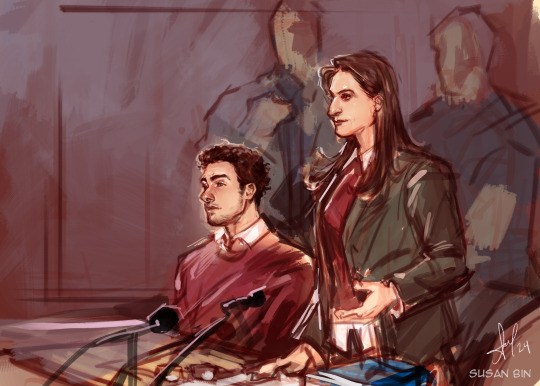
Court sketch artist Susan Bin, yosb has made a court sketch depicting Luigi Mangione and his lawyer, Karen Friedman Agnifilo, based on photos from 23/12
She's seeking work as a court sketch artist for the case
358 notes
·
View notes
Text

Philip Corner, PoorManMusic, (Vinyl/LP), plana-C alga048, Alga Marghen, 2015 [midcenturyclassical. Art: © Philip Corner]

Performed at The Judson Dance Theater, Judson Memorial Church, New York City, March 21 and 22, 1967
Adaption: Jerome Rothenberg Choreography: Carol Ritter Music: Philip Corner
Musician: Alison Knowles, Bill Friedman, Billy Fisher, Carol Marcy, Carol Reck, Carolee Schneemann, Cyrelle Forman, David Reck, Edward Goldstein, Ferdinando Buonanno, James Tenney, Malcolm Goldstein, Maud Haimson, Max Neuhaus, Steve Reich, Susan Hartung
Performer [Poets]: Carol Bergé, Clayton Eshleman, David Antin, Dick Higgins, Eleanor Antin, George Kimball, Hannah Weiner, Jackson Mac Low, Jerome Rothenberg, Paul Blackburn, Robert David Cohen, Susan Sherman
#graphic design#art#fluxus#music#music album#theatre#theater#handwriting#visual writing#vinyl#cover#philip corner#alga marghen#1960s#2010s
22 notes
·
View notes
Text
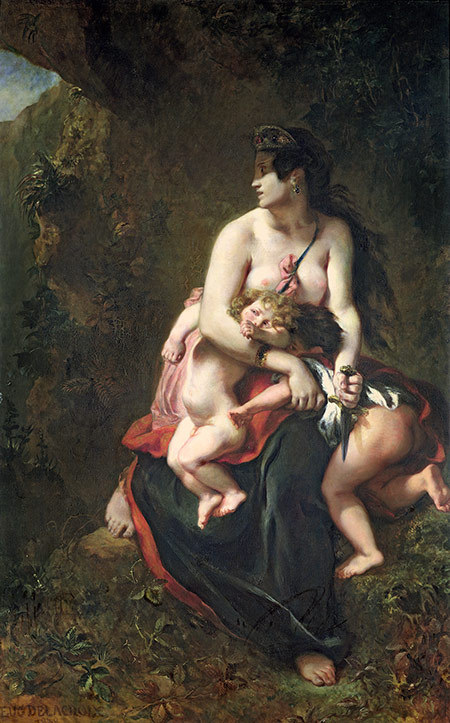


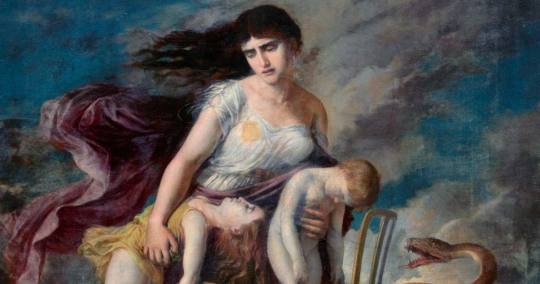



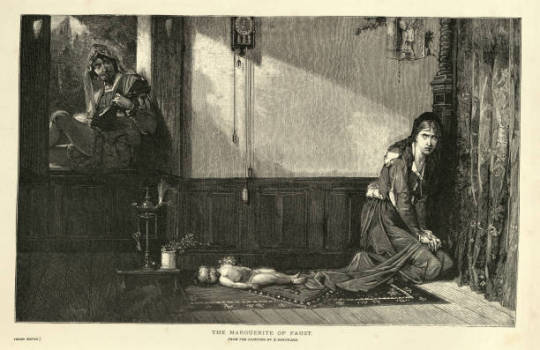

THE MODERN MOTHER WORLDLY
medea – eugène delacroix / el arbol de la llorona – photo by gabriel perez salazar / child murder by mothers: patterns and prevention – susan hatters friedman and phillip j. resnick / medea on her golden chariot – germán hernández amores / la llorona as andrea yates – iliana rocha / the widow of a slain soldier – unknown artist / bruno is orange – hop along / the marguerite of faust – after j. bertrand / funeral – the buttress
#deeply specific but hopefully someone else gets me on this#web weaving#parallels#medea#la llorona#maternal filicide#iliana rocha#hop along#faust and marguerite#the buttress#andrea yates#child harm#child death#mine
161 notes
·
View notes
Text
All about love — bell hooks
Return of the goddess—Edward whitmont
Men who hate women and the women who love them—Susan forward
The crone—Barbara Walker
Female chauvinist pigs—Ariel levy
Bad feminist—Roxanne gay
When god was a woman—Merlin stone
The beauty myth—Naomi wolf
Cinderella complex—collete dowling
Reasonable creatures—katha pollitt
Born female—Caroline Bird
Femininity—Susan brown miller
Second sex—Simone de Beauvoir
The feminine mystique—Betty Friedman
The work of being watched—mark andrejevic
We are your sisters—Dorothy sterling
Gyn/Ecology—mary Daly
Toward a new psychology of women—Jean baker miller
Fasting girls—Joan Jacob’s brumberg
The prostitution of sexuality—kathleen barry
Women’s health, politics, and power: essays on sex/gender, medicine, and public health —Elizabeth fee
The seven daughters of Eve—Bryan Sykes
The baby business—deborah spar
Living dolls the return of sexism—Natasha Walter
Women’s spirituality—Charlene Spretnak
#personal#quotes#books & libraries#literature#feminist literature#feminsm#books and reading#reading#read list
4 notes
·
View notes
Note
ok I saw the reblog of your star trek books post about someone asking for recs someday, but I’m impatient and have decided I am not gonna wait and that I will send the recs ask MYSELF dammit!!
I feel like i’ve never gotten into the books because I’m worried they will be bad, so if you have any TOS/DS9 book recs I would LOVE to hear them — I have consumed all Star Trek content made up until this point and am so so desperate for new material
thank you SOOO much for asking i love any excuse to talk about st books!!! (though it is kinda funny cause that same person talking about recs did end up messaging me already lol)
for TOS i would say the best ones are:
Killing Time by Della Van Hise — famously gay and for good reason, it’s just blatantly romantic spirk content. it’s all about how they are meant to be together in every alternate universe and that they are soulmates <3
Spock’s World by Diane Duane — bones, kirk, and spock go to vulcan because the vulcans are considering leaving the federation. really great plot and super accessible characterization for the main three!
Vulcan’s Forge by Susan Shwartz — follows two plots- young spock figuring out that he wants to join star fleet, and older spock dealing with kirk’s death and trying to move on. it’s really not as sad as it sounds and it adds so much to spock’s character imo.
id honestly also recommend the novelizations of the movies, they definitely add a lot of new content
—
DS9 is harder cause i love soooo many of these but some of the best are:
Hollow Men by Una McCormack — kind of a sequel to the episode ‘in the pale moonlight’, garak and sisko go on a trip to earth to deal with dominion war stuff (and everyone else has shenanigans on the station)
The 34th Rule by Armin Shimerman — basically quark whump, him and rom are sort of kicked off the station and go to a prison camp and the rest of the characters have conflicting feelings about this (it’s a bit overdramatic at times but i love quark-centric stories so 🤷)
Fallen Heroes by Dafydd ab Hugh — this one is pretty crazy, quark and odo suddenly travel 3 days into the future and find the entire station is dead, like Everyone died, and they have to figure out what happened and fix it (i love quodo and there’s a scene where quark vacuums odo up, need i say more)
Saratoga by Michael jan Friedman — sisko is meeting with the other survivors from the ship jennifer died on. there’s sabotage, intrigue, betrayal and such and then the b plot is that odo has to pretend to be quark. so basically an average ds9 episode lol
there are definitely a lot more good ones but it depends on what characters you like and what kinds of stories you’re looking for ya know? please please message me if you want to talk ab it more!!!!
39 notes
·
View notes
Text
Make It So Friday
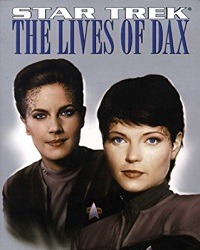
Dax is one of the best characters in Star Trek. (I could say, I think, but, I’m not gonna, the I think is baked in since I’m writing this blurb). There’s something about an immortal being who is also not immortal, who dies and yet still lives. And, there’s something about the combination of newness of the host and oldness of the symbionts that is just, really cool to think about.
This is technically a book of short stories by some awesome authors like, Michael Jan Friedman, S.D, Perry, Judith & Garfield Reeves-Stevens, and more. They each take on a story about one of the 9 Dax symbionts, from Lela, to Torias, to Jadzia and Ezri too. My favorites were the one by Susan Wright, "Infinity" about Tobias, and of course, the one about my favorite Dax, Jadzia, “Reflections” by L.A. Graf.
But, honestly, the coolest part of this wasn’t just that we got to learn about all the Dax hosts, but, that so many of the Dax hosts also knew other big characters in the Star Trek universe, like Dr. McCoy and others. Fun.
You may like this book If you Liked: The Last Best Hope by Una McCormack, The Autobiography of Jean-Luc Picard by David A. Goodman, or Star Trek by John Byrne
The Lives of Dax by Marco Palmieri, Ed.
#makeitsofriday#nmlRA#nevins memorial library#star trek#star trek novels#star trek novel#star trek fiction#the lives of dax#star trek the lives of dax#ezri dax#jadzia dax#torias dax#curzon dax
40 notes
·
View notes
Text
what inspires me most about Susan Friedman is the way she talks to people. in all the conversations I've listened to her have with others, she is always phrasing things in the most empathetic and assertive ways. she will regularly thank people for asking things, or for giving her opportunities to practice explaining things. she will disagree with points in the most polite and straightforward way while also articulating her position very clearly and strongly. I would love to be able to talk like her one day, to have the advanced skills to be able to engage like that in real time. it's honestly incredible.
16 notes
·
View notes
Text
MOVIE MUSICAL DIVAS TOURNAMENT: ROUND 1 MASTERPOST
One-hundred Divas go in, only fifty come out.
All Polls Here
Completed:
Judy Garland vs. Liza Minnelli Asha Bhosle vs. Betty Garrett Jessica Harper vs. Patricia Quinn Lena Horne vs. Doris Day Ellen Greene vs. Twiggy
Pearl Bailey vs. Anita Ellis Ginger Rogers vs. Cyd Charisse Ruby Dee vs. Dolores Grey Nancy Carroll vs. Jo Kennedy Vivian Blaine vs. Esther Williams
Diana Ross vs. Audrey Hepburn Ethel Waters vs. Irene Dunne Lesley Ann Warren vs. Susan Sarandon Helen vs. Lone Hertz Kathryn Grayson vs. Virginia O'Brien
Deborah Kerr vs. Eleanor Powell Whitney Houston vs. Maria Friedman Chita Rivera vs. Jane Powell Kay Thompson vs. Alice Pearce Lata Mangeshkar vs. Zizi Jeanmaire
Natalie Wood vs. Bernadette Peters Maxine Sullivan vs. Ruby Keeler Jane Russell vs. Rosalind Russell Dorothy Dandridge vs. Ann-Margret Rita Moreno vs. Marilyn Monroe
Carol Burnett vs. Lucille Ball Little' Nell Campbell vs. Whoopi Goldberg Shirley Jones vs. Betty Buckley Cuckoo Moray vs. Josephine Baker Debbie Reynolds vs. Marni Nixon
Ethel Merman vs. June Allyson Catherine Deneuve vs. Françoise Dorléac Alice White vs. Lupe Vélez Vyjayanthimala vs. Leslie Caron Helen Kane vs. Jeanette MacDonald
Glynis Johns vs. Julie Andrews Betty Hutton vs. Vera-Ellen Bea Arthur vs. Shirley MacLaine Joan Crawford vs. Rita Hayworth Jessie Matthews vs. Bebe Daniels
Eileen Brennan vs. Moira Sherer Madeline Kahn vs. Charmian Carr Ann Miller vs. Mitzi Gaynor Barbra Streisand vs. Bette Midler Hermione Gingold vs. Claire Luce
Ann Reinking vs. Gwen Verdon Eleanor Parker vs. Susanna Foster Miss Piggy vs. Eartha Kitt Olivia Newton-John vs. Dolly Parton Angela Lansbury vs. Rosemary Clooney
FAQS
3 notes
·
View notes
Text
To Be Read July 2023
The Mind
The Molecule of More: How a Single Chemical in Your Brain Drives Love, Sex, and Creativity―and Will Determine the Fate of the Human Race by Daniel Z. Lieberman & Michael E. Long
The Brain: A Very Short Introduction by Michael O'Shea
Consciousness: A Very Short Introduction by Susan Blackmore
The Mind-Gut Connection: How the Hidden Conversation Within Our Bodies Impacts Our Mood, Our Choices, and Our Overall Health by Emeran Mayer MD
Trick Mirror: Reflections on Self-Delusion by Jia Tolentino
Sensitive is the New Strong: The Power of Empaths in an Increasingly Harsh World by Anita Moorjani
The Highly Sensitive Person by Elaine Aron
Laziness Does Not Exist by Devon Price Ph.D.
Wired to Create: Unraveling the Mysteries of the Creative Mind by Scott Barry Kaufman & Carolyn Gregoire
The Body Keeps the Score: Brain, Mind, and Body in the Healing of Trauma by Bessel A. van der Kolk
Music & The Mind (Art Philosophy, Aesthetics, Neuroaesthetics)
Saved by a Song: The Art and Healing Power of Songwriting by Mary Gauthier
The Song Machine: Inside the Hit Factory by John Seabrook
This is What it Sounds Like: What the Music You Love Says About You by Ogi Ogas & Susan Rogers
Why You Like It: The Science and Culture of Musical Taste by Nolan Gasser
The Story of Music: From Babylon to the Beatles: How Music Has Shaped Civilization by Howard Goodall
Of Sound Mind: How Our Brain Constructs a Meaningful Sonic World by Nina Kraus
Aesthetics: A Very Short Introduction by Bence Nanay
Equipment for Living: On Poetry and Pop Music by Michael Robbins
How Music Works by David Byrne
General Non-Fiction / History / Science
The Russian Revolution: A Very Short Introduction by S. A. Smith
The French Revolution: A Very Short Introduction by William Doyle
Linguistics: A Very Short Introduction by P. H. Matthews
Mathematics: A Very Short Introduction by Timothy Gowers
After the End of Art: Contemporary Art and the Pale of History by Arthur C. Danto
Flappers by Judith Mackrell
Marketing for Dummies, 6th edition by Jeanette McMurty MBA
Sinatra: The Chairman by James Kaplan
Get Happy: The Life of Judy Garland by Gerald Clarke
Self-Improvement
Self-Compassion: The Proven Power of Being Kind to Yourself by Dr. Kristin Neff
Self Compassion for Dummies by by Steven Hickman PsyD (in progress)
The Nice Girl Syndrome: Stop Being Manipulated and Abused -- and Start Standing Up for Yourself by Beverly Engel
The Assertiveness Guide for Women: How to Communicate Your Needs, Set Healthy Boundaries & Transform Your Relationships by Julie de Azevedo Hanks, PhD, LCSW
Anatomy of a Breakthrough: How to Get Unstuck When it Matters Most by Adam Alter
Fierce Self-Compassion: How Women Can Harness Kindness to Speak Up, Claim Their Power, and Thrive by Kristin Neff PhD
The Art of Possibility by Rosamund Stone Zander
Be Angry: The Dalai Lama on What Matters Most by His Holiness the Dalai Lama,
Anger: The Conflicted History of an Emotion by Barbara H. Rosenwein
The Power of Fun: How to Feel Alive Again by Catherine Price
In Awe: Rediscover Your Childlike Wonder to Unleash Inspiration, Meaning, and Joy by John O'Leary
Creating a Life That Matters: How to Live and Love with Meaning and Purpose by Manis Friedman & Rivka Goldstein
Fiction
Babel by R. F. Kuang
The Last Bookshop in London by Madeline Martin
A Journey to the Center of the Earth by Jules Verne (narrated by Tim Curry)
In/Spectre #2
The Goldfinch by Donna Tartt (in progress)
The Poisoner's Handbook ed. Raymond T. Bond
5 notes
·
View notes
Text

Under New York law, for example:
§ 40.15 Mental disease or defect. In any prosecution for an offense, it is an affirmative defence that when the defendant engaged in the proscribed conduct, he lacked criminal responsibility by reason of mental disease or defect. Such lack of criminal responsibility means that at the time of such conduct, as a result of mental disease or defect, he lacked substantial capacity to know or appreciate either: 1. The nature and consequences of such conduct; or 2. That such conduct was wrong.
Under the French Penal Code:
Article 122-1
Those who successfully argue a defense based on a mental disorder are usually referred to mandatory clinical treatment until they are certified safe to be released back into the community, rather than prison.[41]
Postpartum depression
[edit]
Postpartum depression (also known as post-natal depression) is recognized in some countries as a mitigating factor in cases of infanticide. According to Susan Friedman, "Two dozen nations have infanticide laws that decrease the penalty for mothers who kill their children of up to one year of age. The United States does not have such a law, but mentally ill mothers may plead not guilty by reason of insanity."[42] In the law of the Republic of Ireland, infanticide was made a separate crime from murder in 1949, applicable for the mother of a baby under one year old where "the balance of her mind was disturbed by reason of her not having fully recovered from the effect of giving birth to the child or by reason of the effect of lactation consequent upon the birth of the child".[43] Since independence, death sentences for murder in such cases had always been commuted;[44] the new act was intended "to eliminate all the terrible ritual of the black cap and the solemn words of the judge pronouncing sentence of death in those cases ... where it is clear to the Court and to everybody, except perhaps the unfortunate accused, that the sentence will never be carried out."[45] In Russia, murder of a newborn child by the mother has been a separate crime since 1996.[46]
Unintentional
[edit]
For a killing to be considered murder in nine out of fifty states in the US, there normally needs to be an element of intent. A defendant may argue that they took precautions not to kill, that the death could not have been anticipated, or was unavoidable. As a general rule, manslaughter[47] constitutes reckless killing, but manslaughter also includes criminally negligent (i.e. grossly negligent) homicide.[48] Unintentional killing that results from an involuntary action generally cannot constitute murder.[49] After examining the evidence, a judge or jury (depending on the jurisdiction) would determine whether the killing was intentional or unintentional.
Diminished capacity
[edit]
In jurisdictions using the Uniform Penal Code, such as California, diminished capacity may be a defense. For example, Dan White used this defense[50] to obtain a manslaughter conviction, instead of murder, in the assassination of Mayor George Moscone and Supervisor Harvey Milk. Afterward, California amended its penal code to provide "As a matter of public policy there shall be no defense of diminished capacity, diminished responsibility, or irresistible impulse in a criminal action...."[51]
Aggravating circumstances
[edit]
Murder with specified aggravating circumstances is often punished more harshly. Depending on the jurisdiction, such circumstances may include:
Premeditation
Poisoning
Lying in wait
Murder of a child
Murder committed during sexual assault
Murder committed during kidnapping[52]
Multiple murders committed within one criminal transaction or in different transactions as part of one broader scheme
Murder of a police officer,[53][54] judge, firefighter or witness to a crime[55]
Murder of a pregnant woman[56]
Crime committed for pay or other reward, such as contract killing[57]
Exceptional brutality or cruelty, such as that employed in torture murder
The use of excessive or gratuitous violence beyond that which is necessary to kill; overkill[58]
Murder committed by an offender previously convicted of murder
Methods which are dangerous to the public[59] e.g. explosion, arson, shooting in a crowd etc.[60]
Murder for a political cause[53][61]
Murder committed in order to conceal another crime or facilitate its commission.[62]
Murder committed in order to obtain material gain, for example to obtain an inheritance[63]
Hate crimes, which occur when a perpetrator targets a victim because of their perceived membership in a certain social group.
Treachery (e.g. Heimtücke in German law)
In the United States and Canada, these murders are referred to as first-degree or aggravated murders.[64] Under English criminal law, murder always carries a mandatory life sentence, but is not classified into degrees. Penalties for murder committed under aggravating circumstances are often higher under English law than the 15-year minimum non-parole period that otherwise serves as a starting point for a murder committed by an adult.
0 notes
Text
Scene and Structure: The Wave Technique - by Susan DeFreitas…
on Jane Friedman site: Often writers of fiction get no instruction whatsoever on how to construct a scene. And personally, I think that’s ridiculous, because scenes are the places where we as readers most feel like we’re living the story. What would the Harry Potter books be without all that dialogue? What would The Hunger Games be like if Suzanne Collins had relied on summary rather than…
0 notes
Text
Procrastinator's Creed (The Riddler)
1985: Birth, intended to target the East German Stasi.
Event 1989: Death of Anatole Steintfeldt, Rabbi; written as "Duckman", voiced by specialist called in; "Jason Alexander", Quantico.
1990: Mad Pride, mother takes a turn for the worse; concerned about son, dueling Rick Flair's nephew, Matthew Lennox.
Event 1991: Psychoanalysis of State Police IQ examination, maxes scale, age 6; adderral removed from market, for minors and adults; Hitler's patent, amphetamines.
1995: MSN Chat, on MSN Network; international authorities are hunting the Unabomber, and his support inside the online community.
Event 1998: Ted Kaczynski, caught as "Agent Penguin"; "Net Nanny" software, developed by John Allen Muhammad, seized by US government as contraband. Alias, "nil", transferred to Comcast, 56K.
1999: Iranian-Contra membership offered, on mass broadcast, to Discover network; fighting the Students, for The Shah.
Event 1999: The death of Alice Claire O'Neill nee Charlebois, through boycott of Proctor and Gambol; informed that "Kraft", was owned by "Proctor and Gambol"; suicide to avoid death at hands of Jeff "Jingy B" Borden; entire cinema career, revealed to be a fraud, through Woody Allen; "Taco Heaven" drive-in theater, "Deconstructing Harry" and "Manhattan Murder Mystery", placed on television by Hopkinton Drama Club investigating death of Rory Ahlquist.
2001: British Social Democrats hunt for ways to counter medical industry in London proper, and in England and Britain; so-called "Reform", actually stricter for patients, suspects, and convicts, the governed; British learn otherwise, in America.
Event 2002: Method of cranking David Cameron, recorded through MI-6 operative Christine Carr, to his removal from British Parliament, as well as other British Conservatives; removed from government en masse.
2004: Invited, into the Resource Economics program, in the Energy Supply concentration; however, through police federal policy, of economics programs under Professor Gerald Friedman, Mossad.
Event 2004: Mathematics numbers from Susan Murphy, under mathematics passed through lexicon in class in 2002, reveal new quadratic formula specifically geared to fossil fuels yields for gasoline, plastics, carbon fiber, polyester, kerosene, anti-biotics, radiology chemistry, rocket fuel, jet fuel, and diesel. Foreign real estate investment, is blocked, through secondary formula, yield of positive and negative equalling "zero", any matching formula outside of same answer returned per projection.
2004: Canadian Parliament and CIA defectors to INTERPOL, attempt to make a US Presidential candidate, through Allison Haimes, British intelligence.
Event 2004: National Rifle Association, American Federation of Labor, National Organization for the Reform of Marijuana Laws, and the Fraternal Order of Police, are caught red handed working through Canada to influence American elections; Scott Peterson is jailed killing his own intelligence contact network out of the United Kingdom, and David Charlebois is admitted to the CIA AFROTC as gangland narcotics.
2008: Barack Obama is elected with the promise of police reform; civil rights for police, the "right to remain civil in court", any civil rights leadership to a lawyer or attorney or doctor or nurse medic.
Event 2010: The renegotiation of the INTERPOL treaty, to limit INTERPOL to NSA laws, and to cases where a vice worker is abused, not paid or not to coerce or force into vice rules of streets and criminals; based on the arrests of Empress M (Shangrila MUX), Goddess J (National Coalition for Sexual Freedom Newsletter), Maitresse Sandi (Department of Congress Comics Westchester), Mistress Lucinda (Fitchburg State Film School, the Scottish Laureate Guild), and Lady Kim (the Canadian Freemasons, the Hell's Angels).
2009: Dr. Joshua Golden, injects David Charlebois on steroids, GHB, after mass heroin bombs to cause the Sandy Hook shootings over the arrest of Eric Frein through American police and armed forces; the Pennsylvania State Police's targeting, by Canadian Basim.
Event 2010: Joshua Golden, real name Andrew Donson, known as "Swirlyman" on 4chan, is sued for $377,000, $77,000 in legal fees to the state to remove affadavits blocks on documents through the United Kingdom, and $300,000 in escrow account funds out of Poland and the Soviet Jews, the money placed on a digit zero and the actual physical funds taken from the bank and burned, by Secret Service; as counterfeit.
2016: David attends SNHU to be a comic book writer, and out scandals like psychiatric abuse, drug syndicates, and hooker's rings, to the public; all products of modern television, actually the production studios bribing politicians into support of the intelligentsia criminal, the working poor.
Event 2014: "Gotham" runs on television, FOX, own writing, through Alexandra Rhzanova nee Gaetano, the grand niece of Joseph Biden, Senator and Vice President, spawning "The Joker", "Pennyworth", and "The Penguin", through the later film, "The Batman", about the Kennedies, featuring Joseph Kennedy Sr. as "Bruce Wayne".
2020: David is called in by MI-6, to support the Trump Campaign, a Japanese bank owned cop actor, attempting to support the end to wars in Russia and China, to remove CIA assets working through "Teach For America" and other advisor's training programs out of American colleges.
Event 2020: David frames Joseph Biden, as Mossad; actually a British Royalist, out of King James' bloodline; "Longshanks". Biden goes down as a Mossad slur victim, and Donald Trump appears to be senile to the Israeli and Presbyterian public; when Biden is elected and the Russian Basim, are stomped by the USMC, the Croats, Russians, and North Koreans dying in droves, screaming in napalm fueled horror, Trump is concerned with a cheeseburger from Wendy's.
0 notes

